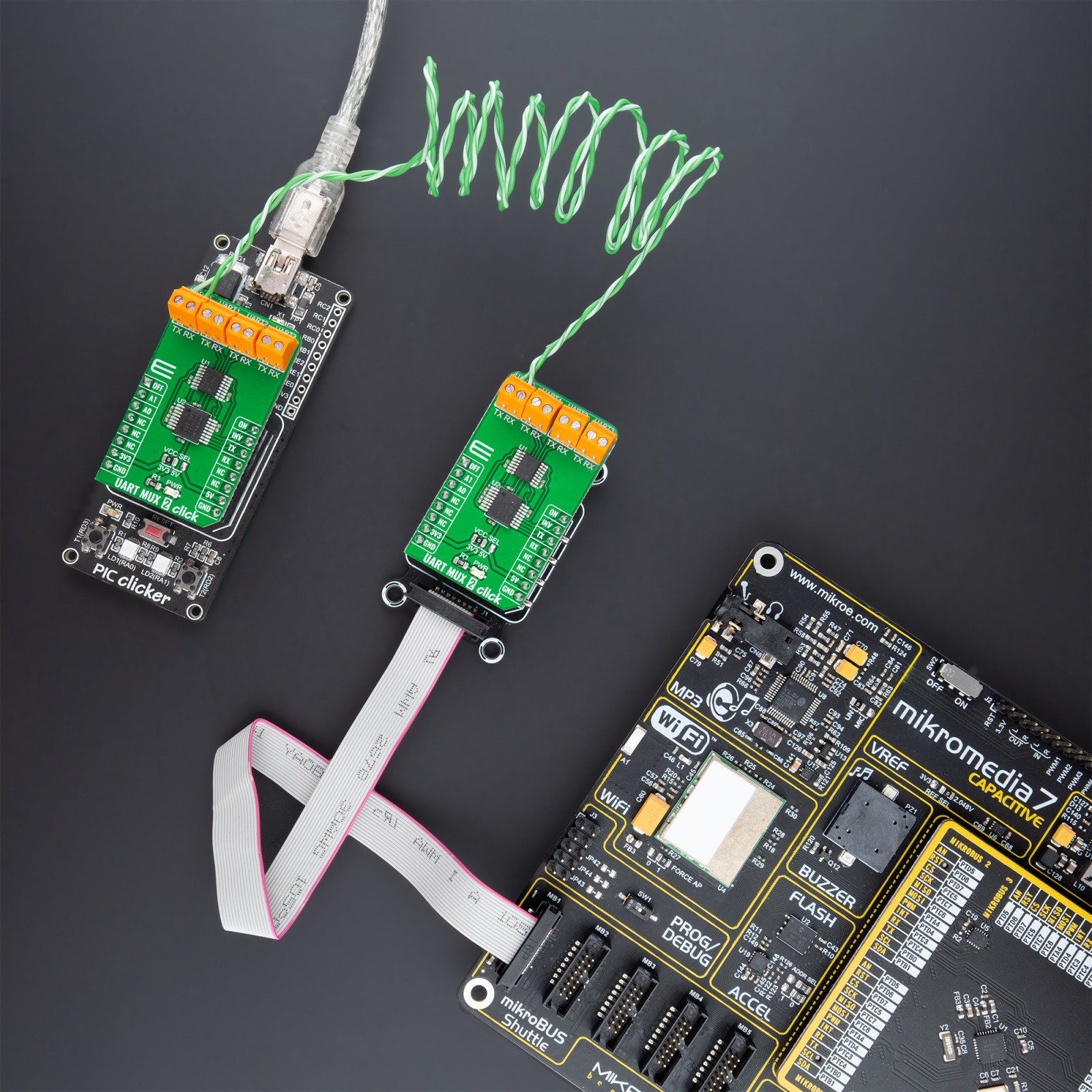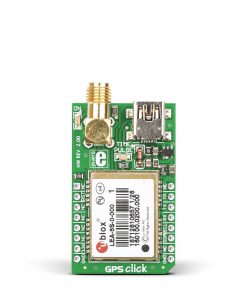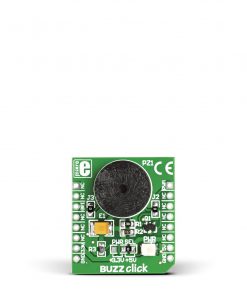UART MUX 2 Click
R790.00 ex. VAT
UART MUX 2 Click is a compact add-on board that enables pseudo-multidrop RS232 transmission. This board features the MAX399, a precise CMOS analog multiplexer that allows four remote RS-232 transceivers to share a single UART from Analog Devices. It offers fast switching speeds with a transition time of less than 250ns and low on-resistance less than 100Ω while retains CMOS-logic input compatibility and fast switching. Channel selection is performed through a set of specific GPIO pins and possesses additional functionality such as the manual ON/OFF feature. This Click board™ is suitable for a wide range of applications, from industrial and instrumentation to a consumer, communications, data-acquisition systems, and many more.
UART MUX 2 Click is supported by a mikroSDK compliant library, which includes functions that simplify software development. This Click board™ comes as a fully tested product, ready to be used on a system equipped with the mikroBUS™ socket.
Stock: Lead-time applicable.
| 5+ | R750.50 |
| 10+ | R711.00 |
| 15+ | R671.50 |
| 20+ | R646.22 |
























